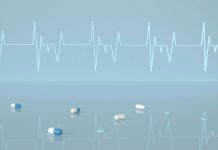
High blood pressure, or hypertension, is often called the “silent killer.” This nickname comes from its ability to quietly cause significant damage to our bodies without any obvious symptoms.
Among the serious health issues linked to high blood pressure, stroke stands out as one of the most severe. Strokes can have devastating consequences, including paralysis, speech difficulties, and in some cases, even death.
Understanding the link between high blood pressure and stroke is crucial for prevention and maintaining a healthy life.
First, let’s break down what high blood pressure is. Imagine the blood vessels in your body as a series of pipes. When the pressure in these pipes is too high, it can damage the pipes’ walls.
Over time, this damage can lead to several health problems, including heart disease, kidney disease, and stroke.
Blood pressure is determined by the amount of blood your heart pumps and the resistance it meets in the arteries. The more blood your heart pumps and the narrower your arteries, the higher your blood pressure will be.
Now, onto stroke. A stroke occurs when the blood supply to part of your brain is interrupted or reduced, preventing brain tissue from getting oxygen and nutrients. Strokes can be ischemic, caused by blockages, or hemorrhagic, caused by bleeding.
High blood pressure can lead to both types. It’s the leading cause of stroke, primarily because it contributes to the narrowing and weakening of blood vessels in the brain, making them more likely to clog or burst.
Research has consistently shown the strong connection between high blood pressure and the risk of stroke. For example, studies have found that having high blood pressure doubles—even quadruples—your risk of having a stroke. It’s a direct relationship: the higher your blood pressure, the higher your risk of stroke.
One reason this link is so strong is that high blood pressure contributes to the formation of atherosclerosis, where plaque builds up in the arteries, narrowing and hardening them. This condition can lead to blockages that cause ischemic strokes.
High blood pressure can also weaken blood vessels in the brain, leading to hemorrhagic strokes when a weakened vessel ruptures and bleeds into the surrounding brain tissue.
Prevention and management of high blood pressure are key to reducing stroke risk. Lifestyle changes, such as eating a healthier diet with less salt, exercising regularly, maintaining a healthy weight, limiting alcohol intake, and quitting smoking, can significantly lower blood pressure.
In some cases, medication may also be necessary to keep blood pressure in check.
It’s important to note that high blood pressure is manageable, and the risk of stroke can be significantly reduced with the right approach. Regular blood pressure checks are essential, as they can help catch high blood pressure early on.
This is crucial because most people with high blood pressure do not show any symptoms until significant damage has occurred.
In summary, the relationship between high blood pressure and stroke is a stark reminder of the importance of managing our blood pressure.
By understanding this connection, we can take proactive steps towards reducing our stroke risk through lifestyle changes and, when necessary, medication.
Remember, while high blood pressure may be a silent killer, knowledge and action can give us a loud and clear defense against stroke.
If you care about high blood pressure, please read studies about unhealthy habits that may increase high blood pressure risk, and drinking green tea could help lower blood pressure.
For more information about high blood pressure, please see recent studies about what to eat or to avoid for high blood pressure, and 12 foods that lower blood pressure.
Copyright © 2024 Knowridge Science Report. All rights reserved.



